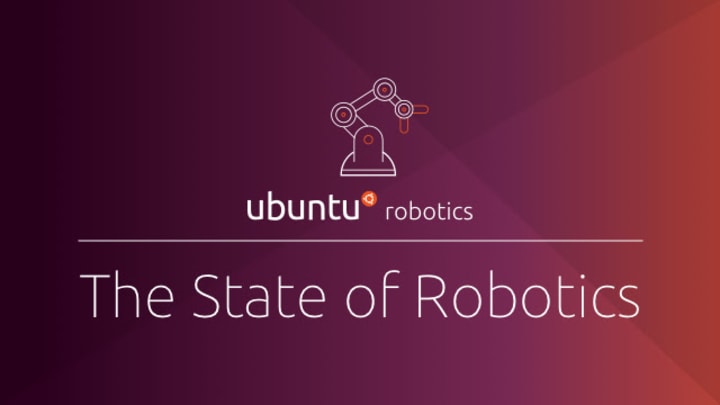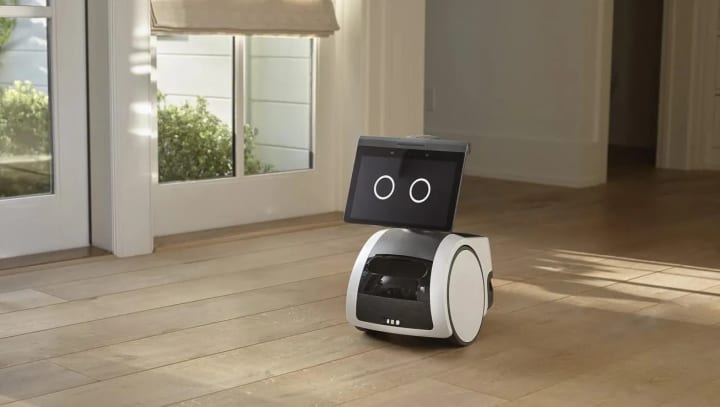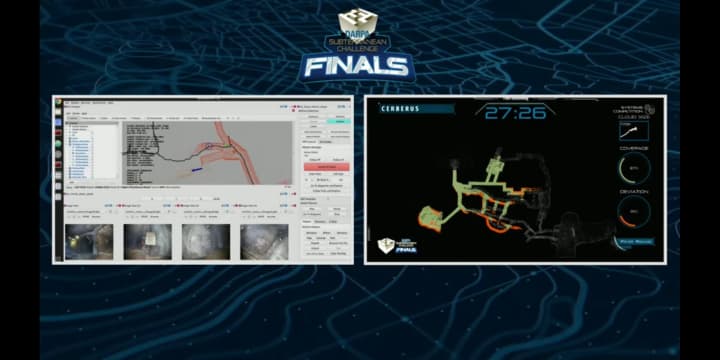Gabriel Aguiar Noury
on 16 October 2021

September news is charged with analysis and comment of what has been a month with important announcements for open source robotics. It has been a month to understand that, in a nascent and fragmented market, the actors have a deeper impact upon all the stakeholders. A flop won’t be just a flop, it could be the reason why someone won’t give a robot a chance.
What?
Ok, let’s start.
Open source robotics events – ROS World
You still have time to register for the upcoming ROS World virtual conference. The event will take place on October 20th, and 21st and Canonical will be there with our virtual booth and some lightning sessions that you will love.
So join us for a day charged with groundbreaking talks (such as micro-ROS, the Indy Autonomous Challenge and more). Come to our booth to learn more about Ubuntu Core and real-time, and all our ROS open source tools to deploy and maintain robots in the field.
Head here to register!
Not another Amazon’s Astro review – its impact to open source robotics
We are not doing it because it is trending, but because it happened in September. To be more precise, on the 28th of September, Amazon announced its mobile home robot called Astro. A mobile robot equipped with cameras, a telescope, a screen and two cup holders.

For a first review of the Astro public release, I do recommend reading the IEEE blog. Because today, we are not talking about the robot, but about its impact on the domestic robotics market. 2 paragraphs with 2 different points of view:
Let’s start with the positive side. A big company is pushing the use of robotics in our homes. Despite Amazon’s underlying intentions, which we are not discussing, they are venturing into a field that many failed and many are avoiding. A robot assistant platform is not easy to develop or easy to maintain. History has shown us several examples of how companies can fail, such as Jibo. So, it helps the overall market by having market pioneers or champions that are putting their resources to educate consumers of the opportunities of the technology. Startups do not have the time or resources to educate their users and fight tech biases. Amazon has it. So by praising the benefits of Astro, Amazon is raising awareness about the opportunities that robotics unlocks. Think about voice assistants. When they started they faced strong opposition by people saying this is not needed. This wouldn’t have changed without the investment of the big 5 in this technology.
Ok, let’s jump to the negatives. There has been much speculation about the development of Astro; unhappy engineers pushed to meet a deadline with a technology that was not ready. Many are complaining about the lack of robustness of the device. Plus, yes, who is putting the beer in the robot cup holder? This all raised a big question; what if the robot is a big flop? Well, then we are going to have a bigger debacle than Pepper robots being purchased by healthcare workers. Several healthcare organizations, especially care homes, acquired Pepper robots, just to see that out of the box, there is not much that you can do with it. Several Peppers ended up in rooms, not being used, gathering dust. Many robotics customers were let down, not trusting humanoid robots. We shouldn’t take the impact of negative emerging technologies lightly. Several studies have shown people unconscious bias towards robotics; there is no need to fuel negative views. An unsuccessful Astro robot will delay the overall adoption process of robotic technologies and will impact the image of the technology and the companies driving this innovation.
The robotics world raised its voice with the release of Astro. There are many other topics we would like to discuss, but we wanted to provide this point of view, which shows us how Astro could impact our work.
Who is DARPA winner
September hosted the finals of the DARPA Subterranean Challenge , an edition that searched for novel approaches to rapidly map, navigate, and search underground environments during time-sensitive combat operations or disaster response scenarios. DARPA first announced its Subterranean (SubT) Challenge in 2018 to support open source robotics.
Team CERBERUS was the winner of this three-year-long subterranean challenge!

The finals took place at the Louisville Mega Cavern; a massive man-made limestone mine, big enough to house a ropes course, mountain bike park, and tram-guided tours. DARPA finalists had to navigate environments that incorporated elements from all three previous DARPA events, which included confined spaces to simulate underground mines, metropolitan infrastructure, and cave systems. The challenge had its additional complications, including smoke to affect the visual degradation during operation.
The winner had to explore these environments and find objects of interest that were placed by DARPA organizers. In total, 40 objects were hidden. Once found, the robots had to report the accurate location of the artefact. Each artefact was worth one point.
Team CERBERUS won by finding and locating 23 artefacts out of the 40. Second place went to team CSIRO, who also scored 23 points but in more time than CERBERUS. The third place was for MARBLE, with a score of 18.
What can autonomous mobile robots learn from the new iRobot j7
Thoughtfulness. As soon as we are adding a robotics device to a human environment, we really need to consider the underlying rules of the environment. And it seems that iRobot understood that quite well.
Roomba was born in 1990. Since then, that technology, that seemed at first unnecessary, has been winning a space in our day-to-day life. It took them more than 20 years, but today getting a Roomba is more and more mainstream. Yes, it is not for carpets, but it is handy.
In their attempt to keep integrating their technology with everyday life seamlessly,iRobot announced the release of the j7, alongside a free software update for all Roombas, called Genius 3.0. This update is pushing 3 main features:
- Clean While I’m Away: if permission was given, the iRobot app will use your phone’s location services to start cleaning when you leave the house and pause cleaning when you return.
- Cleaning Time Estimates: Roombas with mapping capability will now estimate how long a job will take them.
- Quiet Drive: Roomba will turn off its vacuum motor on the way to a vacuuming area and the way back so as not to bother users.
This is part of a big push that iRobot is pursuing, aiming to change the way people use their devices today; using the remote control “Clean” button to tackle every room at once. iRobot is pushing more frequent and targeted ways of using its devices. This includes vacuuming specific rooms at specific times that make sense within users schedules.
Why? Because of thoughtfulness.
Houses are not fabrics, there are spoken and unspoken rules, and robots are not good at interpreting the latter. Take for instance using shoes indoors. Some countries do not have strict rules about it, others do. Some areas are for wearing shoes, others don’t. Some areas need to be vacuumed more frequently, others don’t. Robots need more context to follow rules. But the information is already there, they just need the final feedback that comes through user input, now collected through Genius 3.0.
The reason why thoughtfulness is important for home robots, is because robots need to learn and follow rules to not disturb the home ecosystem. There is nothing worse than a Roomba eating my charging cable during a meeting, or making noise during a phone call. Robots can’t be annoying. According to iRobot, the most common reason Roombas don’t complete jobs is that a human cancels it partway through. iRobot would prefer that its robots did not annoy you, and Genius 3.0 is trying to make that happen by finding ways for cleaning to happen in a rule-respecting manner; thoughtfulness.
Open source robotics – video news
We asked what content you would like, and we heard your loud and overwhelming answer; video news!
So we didn’t have another option than work on this new format and are now releasing our first robotics news video featuring amazing companies doing amazing robotic applications!
And if you want to feature your robotics application, just send us an email to [email protected]
Open source robotics – tutorial
Robotics is not only present in big manufacturing environments. It is also changing the way we farm. Agriculture is a key asset for today’s society and robotics is part of its sustainable strategy.
So let’s learn how we can define goal paths for mobile robots so they can complete activities such as harvesting, irrigation or seeding.
In this tutorial, learn how to send a goal path to a mobile robot and the ROS 2 Navigation Stack using Python code.
Stay tuned for more robotics news
September was a month for reflection. A 3-year challenge ended, and we look forward to seeing what this brings to the community; Amazon launched a robot for homes, and we hope that is a success for the sake of robotics, while iRobot gave us a lesson on thoughtfulness (yes, I mentioned it 5 times by now, take it as a hint to go meditate if you want).
As always, we would love to learn from you. So send us a summary of your robotics innovation and project to [email protected] and we will share it in our next robotics newsletter or monthly video. Thanks for reading!



